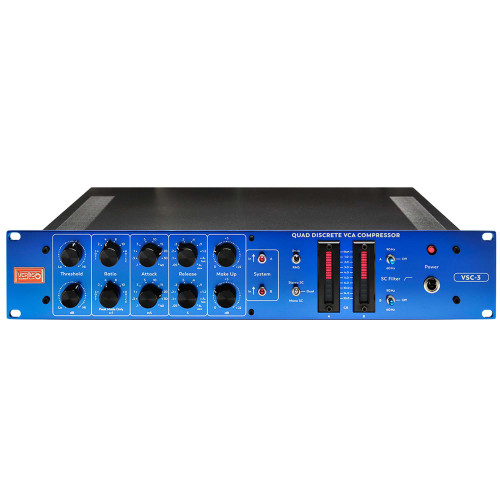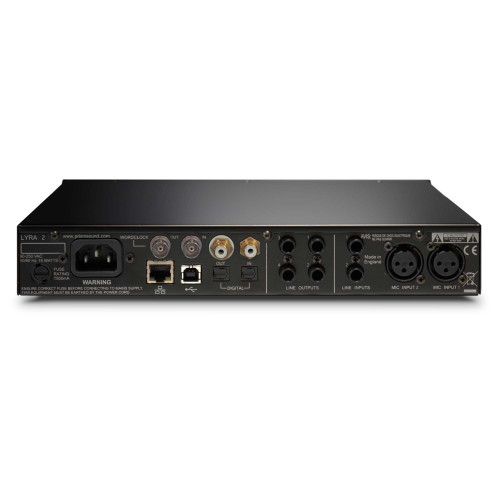GYRATOR FOR ALL!
The VSE-2 is another BIG IMPACT DESIGN and is setting a new benchmark for Tracking, Mix-Bus and Mastering applications. Unlike other EQs on the market the VSE-2 is equipped with six discrete gyrators and lots of matchless detailed features. This unique set-up makes the sound of the golden decade of analog recording equipment available in today‘s studio environment.
VSE-2 Unique Features
- Discrete gyrator based Equalizer concept
- Discrete operational Cut and Boost amplifier +-8db
- 18 selectable frequencies on each channel
- Dual Mono Design
- Hi Pass Filter 10Hz-400Hz with Bypass
- Transformer balanced Input
- All EQ parameters controlled by rotary switches
- Unique A.I.R Mode (Enhancement of the auditory threshold)
- Smooth and Punchy
- Super Low Noise (-98dBu)
- Cut & Boost steps +-: 1dB, 2dB, 3,5dB, 5,5dB, 8dB
Technical Specifications
- Cinemag Balanced In. That 1646 Balanced Out
- Dynamic Range: 122 dB
- Frequency response: 10 Hz … 80 kHz (– 3dB)
- Max. Output Level: + 23dBu / 600 Ohm balanced floating
- Signal to Noise Ratio at + 6dBu = 105dB (20 … 20 kHz, unweighted, RMS)
- Noise: – 99dBu (20 Hz – 22 kHz – unweighted, RMS) @ 0dB Unity Gain
- Crosstalk between channels: > 100dB
- Power consumption: max 10 Watts
WHAT IS A GYRATOR?
Originally proposed in 1948, a gyrator is a type of electronic network that can be used at the heart of equaliser designs as an alternative to its even older inductor predecessor. Although inductors are still popular with some designers looking for a vintage sound, they have inherent issues like ringing and odd harmonics.
On the other hand, gyrators can work better than the ‘real thing’ and give the designer more freedom, a factor put to work in the VSE-2 to create, among other things, a tube-like distortion spectrum.
The Vertigo Sound “Discrete Triple Gyrator 1972” uses a fully discrete circuitry, while other devices on the market realize the Gyrator using an standard IC. The well thought out design of Vertigo‘s Gyrator delivers a tube unit like distortion spectrum. The distortion is produced by the Gyrator itself at the frequency you dial in.











